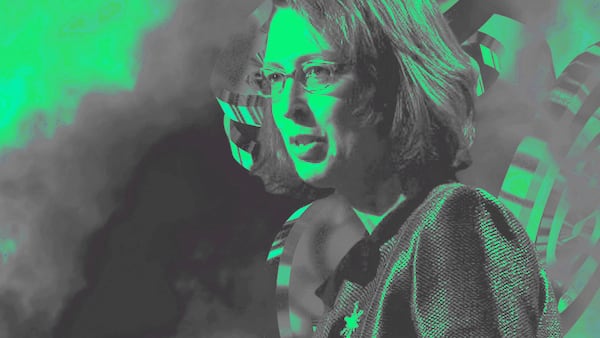For years, a Who’s Who of global financial banks have delved into the possibilities of creating tokenised versions of securities with blockchain technology.
Goldman Sachs, JPMorganChase, Societe Generale, and HSBC have each invested in their own platforms. Not to be left behind, giant asset managers jumped in, too. Larry Fink, the CEO of BlackRock, recently touted the “exciting applications’' for his industry.
Yet, one of the most important tests of tokenisation — blockchain-based bonds — is proving to be underwhelming, according to research from consultancy Opimas that was published this week.
Behind the horizon
Its report found blockchain issuance levels are very low and trading volumes virtually non-existent.
“Some claimed that over $200 trillion worth of bonds, stocks, and other assets would be tokenised globally in the coming years,” said the report, entitled Decentralised Finance and Fixed Income: What Went Wrong? “That future remains frustratingly behind the horizon.”
NOW READ: BlackRock CEO Larry Fink softens crypto stance further with ‘tokenisation’ push
Octavio Marenzi, Opimas CEO and the report’s author, said it’s not too early to call the blockchain bond experiment “a failure.” Aside from four banks, none of those that issued early prototype tokens ever returned to the market with another offering.
“They did it once and said, ‘Well, that was interesting’,” Marenzi told DL News.
That’s a pretty sobering take on a trend that promised to fuse DeFi and TradFi into something new. Wall Street and European financial giants have been stoking excitement that the ageing infrastructure of the capital markets was poised for a revamp.
‘It won’t address the issues that exist in the fixed income world without really going deep and understanding the entire food chain and the lifecycle of a bond.’
— Octavio Marenzi
Asset tokenisation is the process in which traditional assets like stocks, bonds or commodities can be turned into digital representations of themselves and validated on a blockchain.
Proponents say financial firms should use blockchains and other forms of “distributed ledger technology” to streamline the issuance of securities.
The bond market, they say, is especially ripe for transformation because it has long been clogged with inefficiencies and intermediation at every stage.
Early experiments
Banks began toying with the idea of issuing bonds on the blockchain in around 2017, Opimas said. The first commercial initiatives soon followed. SocGen, the third biggest French bank, issued the first covered bond as a security token on a public blockchain in 2019, and has supported other institutions such as the European Investment Bank with their own offerings.
The Paris-based bank has also embraced Ethereum as its system of record, while other banks like Goldman have opted for private ledgers for regulatory reasons. Regulatory uncertainty in the US is driving European banks to lead in development of tokenisation, the report said.
Disappointing data
Banks have trumpeted their projects and garnered a lot of press for their efforts. Recent data from S&P Global appeared to stoke this optimism. It found that issuers have distributed more than $1.5 billion in digital, on-chain bonds in the past year, up from virtually nothing in 2021.
NOW READ: DeFi ‘threat’ drives $1.5B tokenisation boom as Goldman, SocGen eye on-chain bonds
But that’s a minuscule fraction of the $119 trillion global fixed income market.
The Opimas report found that tokenised bonds comprised just 0.001% of all bonds outstanding. It’s even less in terms of trading volume, with most of the bonds issued over the past two years tightly held among a tiny set of investors, the report said.
“In short, we identified only about 30 issuances of DeFi bonds and many of these were pilots,” Opimas said.
Ring of hype
While the $200 trillion target had the ring of hype to it, it’s clear that grabbing even a modest piece of securities issuance is a big ask.
Tokenised bonds aren’t really decentralised, anyway, Marenzi told DL News. The banks only used blockchain for a small part of the lifecycle of the bond and most operations remained on traditional systems.
“That’s why the savings were always going to be limited,” Marenzi said. “Maybe the savings were even negative, because you have to add a technology layer on top of what already exists. So for many of the early issuers, it was a disappointment.”
A hammer in search of a nail
The failure of blockchain bonds to catch on appears to stem from a culture clash between the Silicon Valley types hyping the tech and the risk aversion of traders operating in a highly-regulated, 330-year-old market.
Blockchain evangelists simply don’t understand the actual challenges that bond traders face, Marenzi said.
“They are technologists who think that blockchain technology is the next logical evolution, and we should embrace it,” he said. “But it won’t address the issues that exist in the fixed income world without really going deep and understanding the entire food chain and the lifecycle of a bond.”
NOW READ: Traders brace for Bitcoin ‘fireworks’ as $4b in options set to expire
Transparency, for instance, is touted as a benefit of blockchain. But transparency is anathema to fixed income traders. Why would you want to expose your positions and transactions there for all to see?
Faster settlement is another much-touted potential benefit of blockchain for a market where settlement can take as long as three days.
Marenzi said, however, that the barriers to achieving real-time settlement aren’t technological, they’re organisational.
60-year-old programming
If banks really want to achieve this, they already have adequate tools at their disposal. Even code written in the 60-year-old programming language Cobol, which still predominates in bank back offices, could do the trick, he said.
It’s unclear how much banks have invested in blockchain since 2013. Yet figures from BlockData show that Morgan Stanley invested $1.1 billion in crypto and blockchain companies between August 2021 and May 2022.
In any event, fixed income is in dire need of automation and at least blockchain technology has crystallised thinking around this priority, Marenzi said.
“We could use almost any technology to do it, as long as it gets done,” Marenzi said. “But distributed ledgers have grabbed a lot of attention. There is budget behind it. So it would be easier to push through.”





